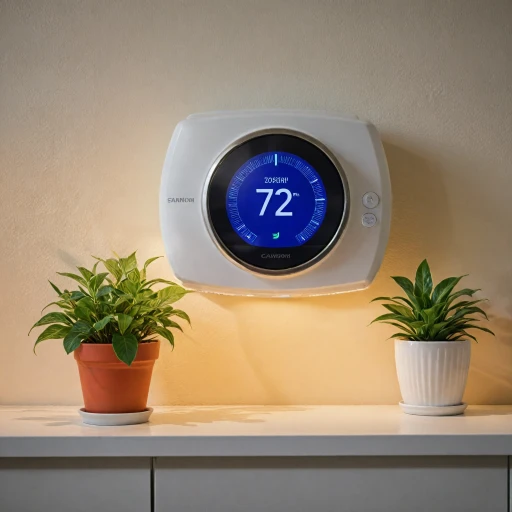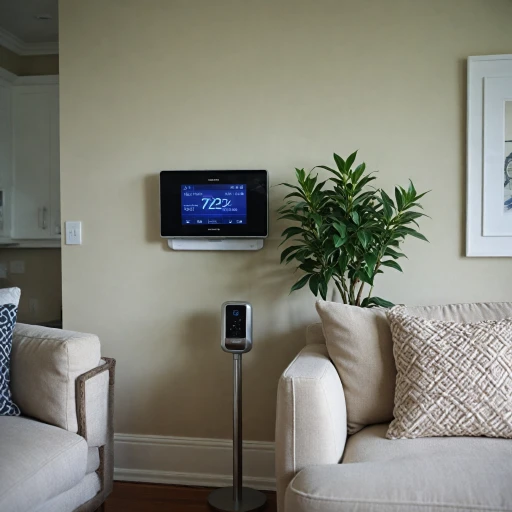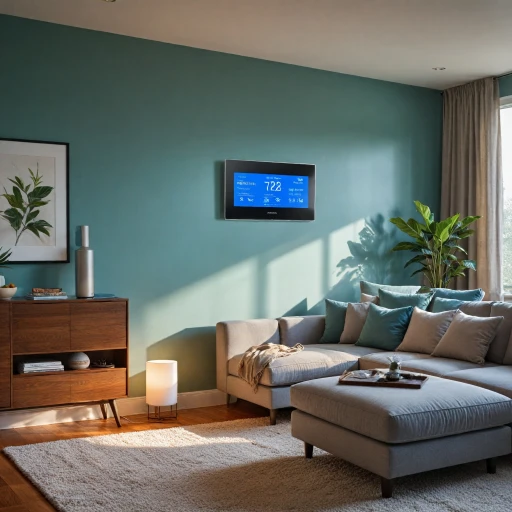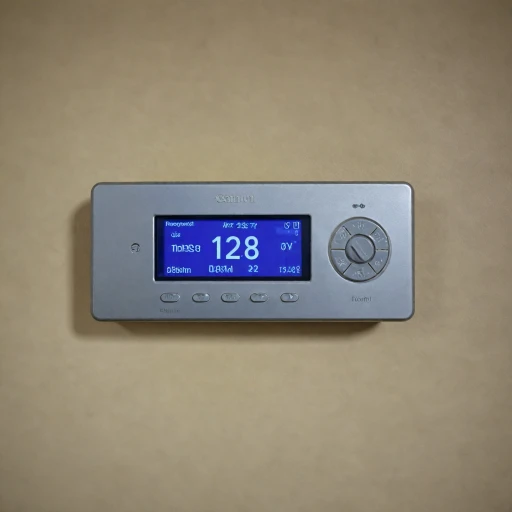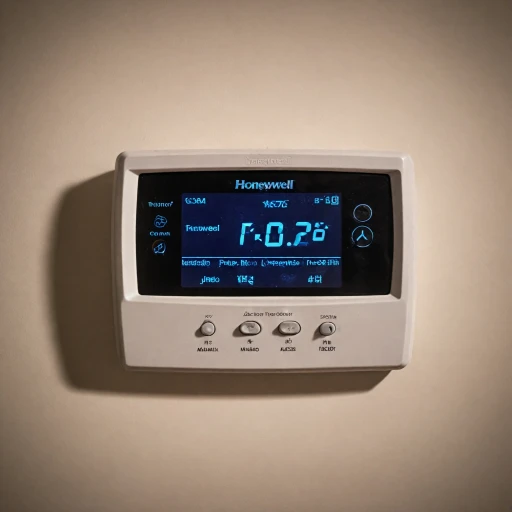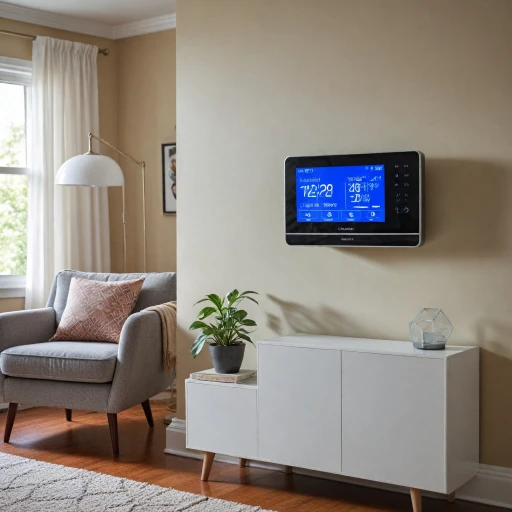
Understanding Smart Thermostats with Remote Sensors
Delving Into the World of Smart Thermostats
Smart thermostats are revolutionizing how we control temperature in our homes, promising not just comfort but also energy efficiency. A standout feature in many of these advanced devices is the integration of remote sensors, which pave the way for a more tailored heating and cooling experience. These intelligent gadgets are not just about keeping your house warm or cool but ensuring it happens in the most efficient manner possible.How Do Smart Thermostats Work?
Smart thermostats function by constantly learning your schedule and habits to adjust the temperature accordingly. Models like the Nest Learning and the Ecobee Smart come equipped with algorithms that predict your preferences, all while anticipating the weather outside. What truly amplifies their efficiency is their compatibility with home automation systems, like Amazon Alexa or Google Nest, allowing voice control for added convenience.The Role of Remote Sensors
Remote sensors transform your thermostat into a truly smart room system by providing temperature readings from various locations within your home. This ensures that all spaces receive accurate heating or cooling, eliminating the guesswork associated with traditional thermostats. With these sensors in play, one can say goodbye to chilly corners or overheated rooms.Choosing the Right Product
When deciding on a smart thermostat with remote capabilities, consider factors like price, available features, and compatibility with existing home setups. The Honeywell Smart thermostat, for example, is renowned for its user-friendly interface and robust energy-saving features, while the Ecobee Smart thermostat shines with its intuitive app control and smart room sensors. For more insights on selecting the appropriate thermostat for your needs, especially if you are considering a device that works effectively with baseboard heaters, you can explore our detailed guide on choosing the right thermostat for your baseboard heater.Benefits of Using Remote Sensors in Smart Thermostats
Advantages of Utilizing Remote Sensors in a Smart Thermostat Setup
Incorporating remote sensors into your smart thermostat system offers a range of benefits that enhance comfort and efficiency. These sensors allow your thermostat to gather temperature data from various rooms, rather than just where the thermostat is located. This ensures a more balanced temperature distribution throughout your home.
Remote sensors work seamlessly with smart thermostats like the Ecobee and Honeywell models, providing a tailored heating and cooling experience. By utilizing these sensors, users report increased energy savings as the thermostat adjusts to the preferred temperature settings in the occupied rooms, rather than merely heating or cooling empty spaces.
Integrating remote sensors can change how your smart thermostat maintains comfort by:
- Reducing hot or cold spots—ensuring every room feels just right.
- Optimizing energy usage, which may lead to reduced utility bills.
- Enhancing the smart room environment as it learns and adapts to different occupancy patterns.
Brands like Ecobee smart thermostats stand out as they seamlessly sync with other home systems, including Alexa and Google Nest. These products consistently get high ratings on Amazon for their ability to make maintaining home comfort intuitive and efficient.
For anyone looking to explore more on home efficiency improvements, especially in terms of lighting, Enhancing home comfort with Lutrons Wireless Ceiling Fan Light Dimmer offers insightful guidance.
Installation and Setup Considerations
Key Steps for Setting Up Your Smart Thermostat with Remote Sensors
When it comes to installing a smart thermostat with remote sensors, a few considerations can enhance your home's temperature control and energy efficiency. Whether you're using a Honeywell, Ecobee, or Google Nest, following these steps will help ensure you get the most out of your thermostat.- Read the Product Manual: Before starting, familiarize yourself with the product manual. Each thermostat and sensor model may have specific requirements or features that influence installation.
- Turn Off Power to Your Heating and Cooling System: For safety, always turn off the power at the breaker panel before handling your thermostat.
- Remove the Old Thermostat: Carefully remove your existing thermostat. Take a picture of the wiring setup to help guide the installation of your new smart thermostat.
- Wiring the New Thermostat: Follow the wiring instructions specific to your smart thermostat model. Brands like Ecobee and Honeywell will have different setups, and correct wiring is critical for effective operation.
- Mount the Thermostat: Once wired, mount the new thermostat base to the wall using the provided hardware. Make sure it's level and securely attached.
- Connecting Remote Sensors: Place the remote sensors in rooms where you need precise temperature control. The sensors typically work via wireless connection, so ensure they communicate effectively with the thermostat.
- Power On and Configure Settings: Restore power to your HVAC system and follow the guided prompts on the thermostat display or the compatible mobile app to complete setup. Adjust the preferences and connect it to smart home ecosystems like Alexa if it supports this feature.
- Calibration: Most smart thermostats will self-calibrate, adjusting to provide optimal temperature control across rooms. This step is crucial for maximizing energy efficiency and ensuring comfort.
Maximizing Energy Efficiency
Optimizing Your Thermostat for Maximum Energy Savings
Maximizing energy efficiency with a smart thermostat is more than just setting a schedule. These devices are designed to learn and adapt to your lifestyle over time, making them invaluable for efficient temperature management. With features that adjust based on your habits, smart thermostats such as Honeywell and Ecobee smart models are ideal options for any home. One significant feature contributing to energy savings is the use of remote sensors. These sensors enable your smart thermostat to gather temperature data from different rooms, ensuring even heating or cooling throughout the house. By doing so, the system avoids unnecessary energy consumption, often reducing energy bills significantly. Here are some key techniques to increase energy efficiency:- Utilize Room Sensors: Strategic placement of room sensors around your home can ensure optimal temperature control, helping your thermostat make informed adjustments.
- Schedule Adjustments: Most smart thermostats are equipped with flexible scheduling features. Make sure to fine-tune your heating and cooling schedules around your daily routine.
- Use Smart Room Temperature Controls: Voice control systems like Alexa or Google Nest compatible devices can help manage your thermostat hands-free, allowing for seamless adjustments.
- Consider Energy Efficient Models: Choose reputable brands known for energy efficiency ratings. Smart thermostats from Amazon bestsellers like the Nest Learning Thermostat or the Ecobee Smart Thermostat with Alexa capability offer advanced features for optimizing temperature settings.
Popular Smart Thermostat Models with Remote Sensors
Top Smart Thermostat Picks Featuring Advanced Remote Sensors
Navigating the world of smart thermostats with remote sensors can be a daunting task due to the variety of options available in the market. Here's a look at some popular models that have garnered excellent customer reviews and ratings.- Ecobee Smart Thermostat with Voice Control: A favorite among users, this product integrates seamlessly with Alexa and Google Nest. Featuring advanced room sensors, it offers precise temperature control and enhanced energy savings. User reviews highlight its easy setup and intuitive features, making it a top contender for those seeking efficiency and convenience.
- Nest Learning Thermostat: This model is known for its learning capabilities, adapting to your routine in approximately a week. Compatible with remote sensors, it provides significant energy savings and can be controlled from anywhere through a smartphone app. It's praised for its sleek design and ease of use, but ensure compatibility with your home heating and cooling systems before purchase.
- Honeywell Home T9 Smart Thermostat: The Honeywell Smart thermostat excels with its remote sensor feature, allowing temperature regulation in different rooms. It works with Alexa, offering voice control for added convenience. The product is noted for its reliability and proportional control of different environments based on occupancy and temperature.
- Sensi Touch Smart Thermostat: Although not equipped with remote sensors, it stands out due to its budget-friendly price on platforms like Amazon. It easily connects with smart home systems and offers extensive control over your heating and cooling needs.
Troubleshooting Common Issues
Handling Common Troubles with Smart Thermostats Featuring Remote Sensors
Experiencing hiccups with your smart thermostat and its remote sensors can be frustrating, but fear not; most issues are typically easy to resolve. Here's a rundown of common problems and their potential solutions:- Connecting Issues: If your remote sensors are having trouble connecting to the thermostat, ensure they're within the appropriate range and there are minimal obstructions. Double-check the WiFi connection to verify it's stable, as disruptions in internet service can affect functionality.
- Calibration Concerns: If the thermostat isn't reading the temperature accurately, consider recalibrating the sensors. Most smart thermostats, like those from Honeywell and ecobee, offer easy-to-follow steps for calibration within the settings menu.
- Integration with Smart Home Devices: For integration with devices like Alexa or Google Nest, ensure that your smart thermostat's firmware is up to date. This can often resolve compatibility issues with other smart home features.
- Battery and Power: Some remote sensors are battery-powered. Regularly check the battery level and replace them when necessary to avoid disruptions in performance.
- Error Messages: Familiarize yourself with the error codes provided by your product’s brand, whether it's a Nest Learning thermostat or a Honeywell smart model. Manufacturer resources can offer specific troubleshooting guidelines.

